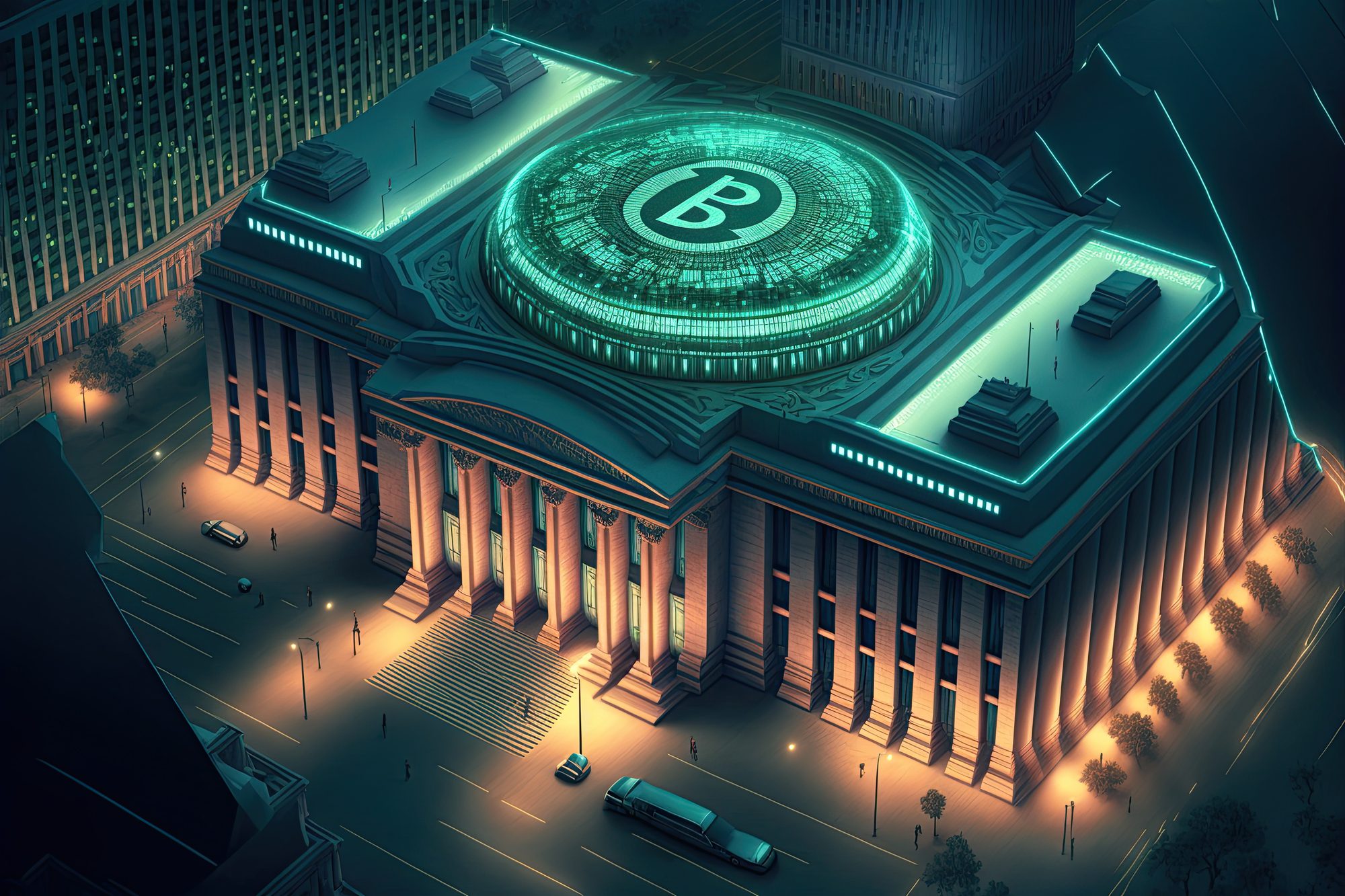Everyone believes Bitcoin is about to take off.
And they may be right.
With Bitcoin ETFs popping up in Europe and Canada, many expect that an American Bitcoin ETF, led first by Blackrock, will be the spark that sends Bitcoin higher.
In fact, the SEC has now accepted applications from six firms to create spot bitcoin exchange-traded funds.
If these ETFs get approved, they would have to buy Bitcoin to backstop their value. The higher the demand for these ETFs, the more Bitcoin they will have to buy.
This will no doubt send the price of Bitcoin higher.
When the first Bitcoin futures ETF was approved in October 2021, Bitcoin shot to an all-time high of $69,000 just a month later.
Imagine what could happen if a number of spot Bitcoin ETFs suddenly get approved and can be traded using traditional brokerage accounts, including RRSPs or 401ks.
But we’re not here to tell you the obvious.
We’re here to tell you a side of this story that no one else will.
While everyone believes that opening Bitcoin to the most prominent institutions benefits Bitcoin supporters, the opposite could be true.
In fact, IF these large and powerful institutions begin to participate in Bitcoin via a spot price mechanism, the very essence of what makes Bitcoin special could be destroyed.
Let me explain.
What is an ETF?
ETFs have been around since the early 90s.
They are a type of investment fund traded on stock exchanges, designed to track the performance of a specific index, a basket of assets, or a commodity.
Essentially, an ETF offers investors exposure to assets without having to buy the assets directly.
For example, investors who believe the price of gold is going up could invest in a gold ETF.
If an investor buys shares in a gold ETF, the gold ETF has to buy the corresponding value of gold.
In other words, if investor demand is more than shares available (or rather, gold held in custody), then the issuer/trustee must buy more physical metal (also held in custody) to convert into ETF shares.
Conversely, when investors sell, and there are no buyers, the metal must be redeemed, and the trustee must sell the metal equivalent of what was sold in shares.
As you can see, when you buy gold via an ETF, you’re not technically owning the physical metal but rather a fiat paper representation.
At its core, a spot gold ETF operates as follows:
- Investors buy units of the ETF from a publicly traded exchange.
- The ETF Provider uses the invested funds to acquire real gold.
- The purchased gold is securely held in trust in vaults by regulated custodians on behalf of the ETF Provider (in the case of Bitcoin, usually in cold storage wallets.)
- When an investor wishes to redeem their ETF units, the ETF Provider sells an equivalent amount of gold to facilitate the redemption process.
Not What You Think
In simpler terms, each share of an ETF is an IOU.
But what happens behind the scenes when an ETF buys gold?
The actual metal purchased is stored by a custodian such as a major bank like JP Morgan or HSBC – yes, the same banks that have been investigated for silver and gold manipulation many times in the past.
But what you may not know is that the value of each share you own, or more specifically, the share-to-metal ratio, actually decreases the longer you hold it.
For example, the fund that manages the ETF must sell gold to pay for expenses, reducing the amount of gold tied to each share.
That’s one of the reasons ETFs should NEVER be considered a long-term investment. In other words, ETFs are not the way to go if you’re looking to gold as a store of value or as an insurance policy against fiat currencies.
The same goes for Bitcoin ETFs.
Over time, the ETF fund will sell some of its Bitcoin to cover operating costs and management fees. As a result, an investor’s unit will gradually hold a slightly smaller amount of Bitcoin than their initial purchase.
Where is the Gold?
Many facts regarding ETFs are often hidden from the average investor.
For example, the world’s largest gold ETF, the SPDR Gold Trust, better known as GLD, does not insure its gold.
As the trustee, GLD passes the storing of their gold to the custodian, which is currently JP Morgan and HSBC. These banks are only responsible for damages to the gold they directly inflict.
But what if the gold they have isn’t real gold? What if they were bars of copper-painted gold?
Based on the prospectus, the custodian would be protected, and the trustee wouldn’t be liable.
That means there’s no clear indication of the grade or quality of the gold you are buying, or presumed to have purchased, via an ETF.
You could be buying shares of 80% gold when you think you’re buying pure gold:
“Neither the Trustee nor the Custodian independently confirms the fineness of the gold bars allocated to the Trust in connection with the creation of a Basket.”- Page 11 of the GLD’s prospectus.
Furthermore, the gold you buy may not even be where you think it is.
Hidden in the GLD prospectus, a custodian is free to store the gold with sub-custodians until the gold is delivered to the custodian’s main vault. The sub-custodians can also store the gold with other sub-custodians.
That means you have no idea where your gold might be, and your gold could be in the hands of 10 different banks!
That’s not the worst part.
Not only are the sub-custodians not accountable for the gold they store and are free to appoint other sub-custodians to hold the gold, but the GLD (the trustee) also has no right to visit the sub-custodians to examine the gold or check out its records.
What’s even crazier is that the GLD can only check their gold in the banks on a limited basis. There is usually only one independent audit at the end of the year and one surprise audit per year.
Again, buying a share of a gold ETF is NOT the same as buying gold.
All of the above can be applied to Bitcoin ETFs.
Phantom Bitcoin
All Bitcoin ETFs, including the proposed ones, have custodians and sub-custodians.
In Canada, there is a requirement that funds must have a custodian based in Canada. However, only a limited number of firms currently fulfill the criteria of being qualified custodians and possessing the necessary capabilities to securely store crypto assets. To get around this, firms have formed partnerships to meet these regulatory demands.
As a result, a common structure in Canada involves a Primary Custodian, a Canadian trust entity meeting the qualified custodian criteria but lacking the technical infrastructure for storing crypto assets, and a Sub-Custodian, usually a US-based entity equipped with the required infrastructure for securely holding crypto assets.
In the case of BlackRock, Coinbase is expected to be their custodian.
And while these custodians are regulated, that doesn’t mean things can’t go afoul.
Imagine if Sam Bankman-Fried’s cryptocurrency exchange, FTX, was the custodian for one of these ETFs.
Sure, custodians aren’t allowed to use the Bitcoins for any other purpose other than storing them, but since Bitcoin is theoretically anonymous, who’s to say what’s really happening with each individual Bitcoin being stored in a wallet?
Furthermore, all trades via the Bitcoin ETFs will have to be cleared and settled, which means multiple exchanges and custodians.
The more custodians become intertwined, the harder it will become to truly track the buying and selling of Bitcoin via the ETFs.
In other words, when buying a share of a Bitcoin ETF, your purchase could have zero influence on Bitcoin itself because it could be a wash trade with another seller within that same ETF.
Carry this forward with multiple ETFs through custodians, and, especially over time, a surge in Bitcoin ETF demand (which would generally drive the price higher) could have little-to-no impact on Bitcoin’s price.
Think about it this way: if it’s already too hard to audit physical gold in vaults, imagine auditing anonymous Bitcoin transactions being traded off the Bitcoin blockchain.
And therein lies yet another BIG problem – one that could destroy the very essence of Bitcoin itself.
We’ll reveal all in the next Letter.
You won’t want to miss it.
Seek the truth,
Carlisle Kane













Excellent info.
I’m less concerned about BitCoin and other cryptocurriences, than I am about the flood of adverts about the advantages of owning gold in the form of coin, bars, or some other material form rather than shares in gold funds.
It’s not at all clear from these adverts how I might dispose of physical gold. Whether the sellers are obligated to buy it back is not at all clear. Moreover, President Roosevelt prohibited citizens holding gold money in the ’30s. Is there a law or other provision to prohibit the president or the federal government from confiscating or compelling those owning physical gold to sell it at a price fixed by the government?
Briefly, though the price of gold might increase substantially, is there any protection provided by law for the owner of gold to sell it at a reasonable cost, or commission? If paper currency and coin lose much of their value, what is an owner of gold to receive when s/he sells his physical gold?
Which federal agency supervises those who sell gold bullion, coins, etc.?
Those advertising there services to those wishing to acquire physical gold may be, in the main, honorable people. Given human nature, however, some of these vendors must be like those peddling snake oil at an earlier time.
What information will you provide to reassure me, insofar as you have such information. that owning physical gold is, though like all investments subject to loss of principal, a reasonable choice for an investor?
Very good info, However need more pertinent info on how , what and where to go in on proper investment that is truly honest and beneficial.
Thanks for sharingl.
All they need to do is give wallet address coinbase is storing the assets. Then anyone can verify, unlike physical assets like gold. Will they opt to do this. I doubt it. We should be able to see it on chain as well and with a little detective work verify.